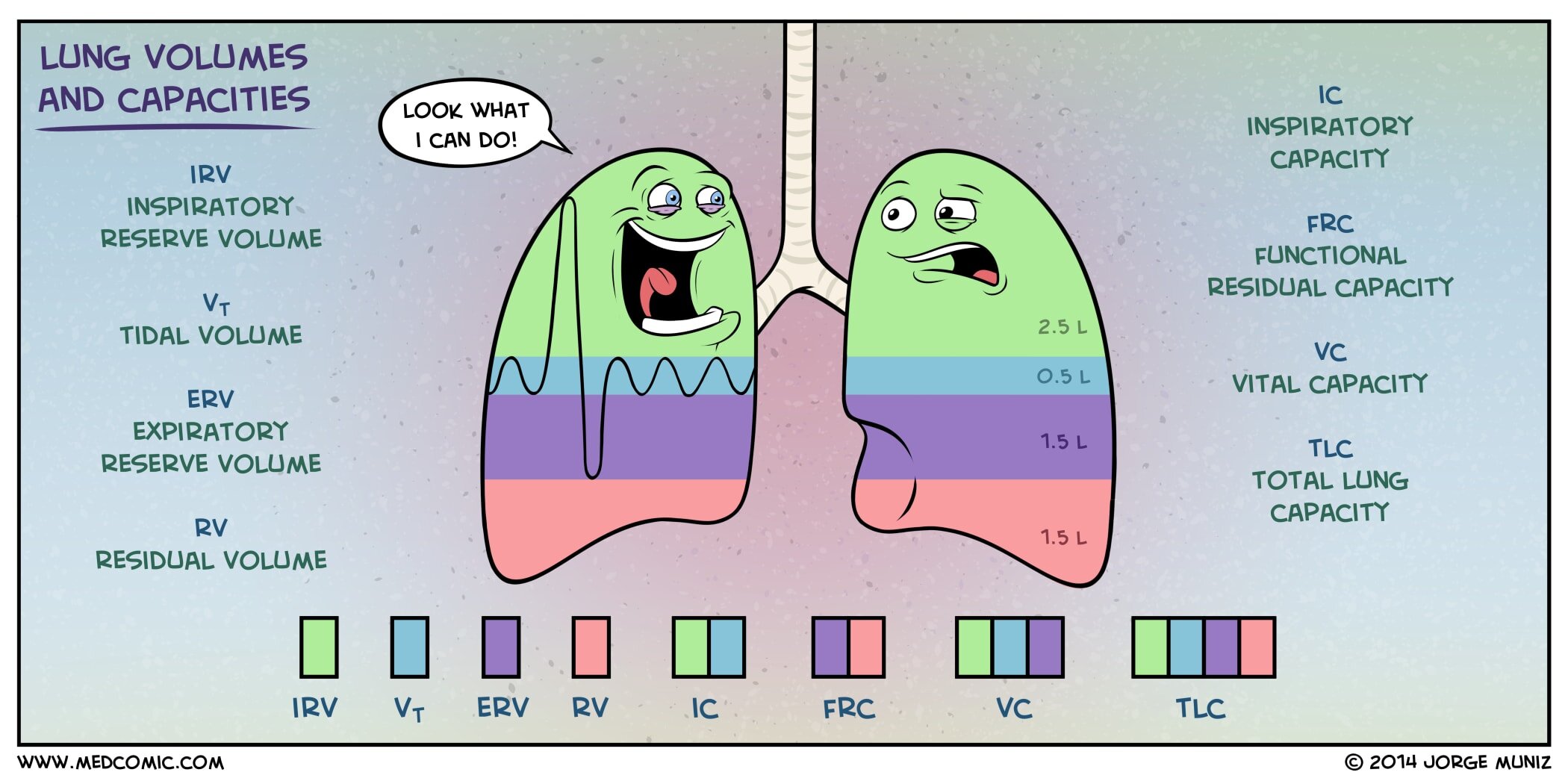Lung Volumes and Capacities
Lung volumes and capacities refer to the changes in lung volume during inspiration and expiration, and the absolute volume of air that the lungs hold during the respiratory cycle. These relationships are recorded using a device called a spirometer.
The amount of air that moves in and out of the lungs during inspiration and expiration with quiet breathing is called the tidal volume (TV). The air inspired with maximal inspiratory effort in excess of the tidal volume is the inspiratory reserve volume (IRV). The expiratory reserve volume (ERV) is the additional air that can be forcibly exhaled after the expiration of a normal tidal volume. The residual volume (RV) is the volume of air remaining in the lungs after maximal exhalation.
The inspiratory capacity (IC) is the amount of air that can be inspired from the end-expiratory level (IRV + TV). The functional residual capacity (FRC) represents the volume of air remaining in the lungs after expiration of a normal breath (ERV + RV). The vital capacity (VC) is the maximum volume exhaled after maximum inhalation (IRV + TV + ERV). The total lung capacity (TLC), about 6 L, is the maximum amount of air that can fill the lungs (IRV + TV + ERV + RV).

